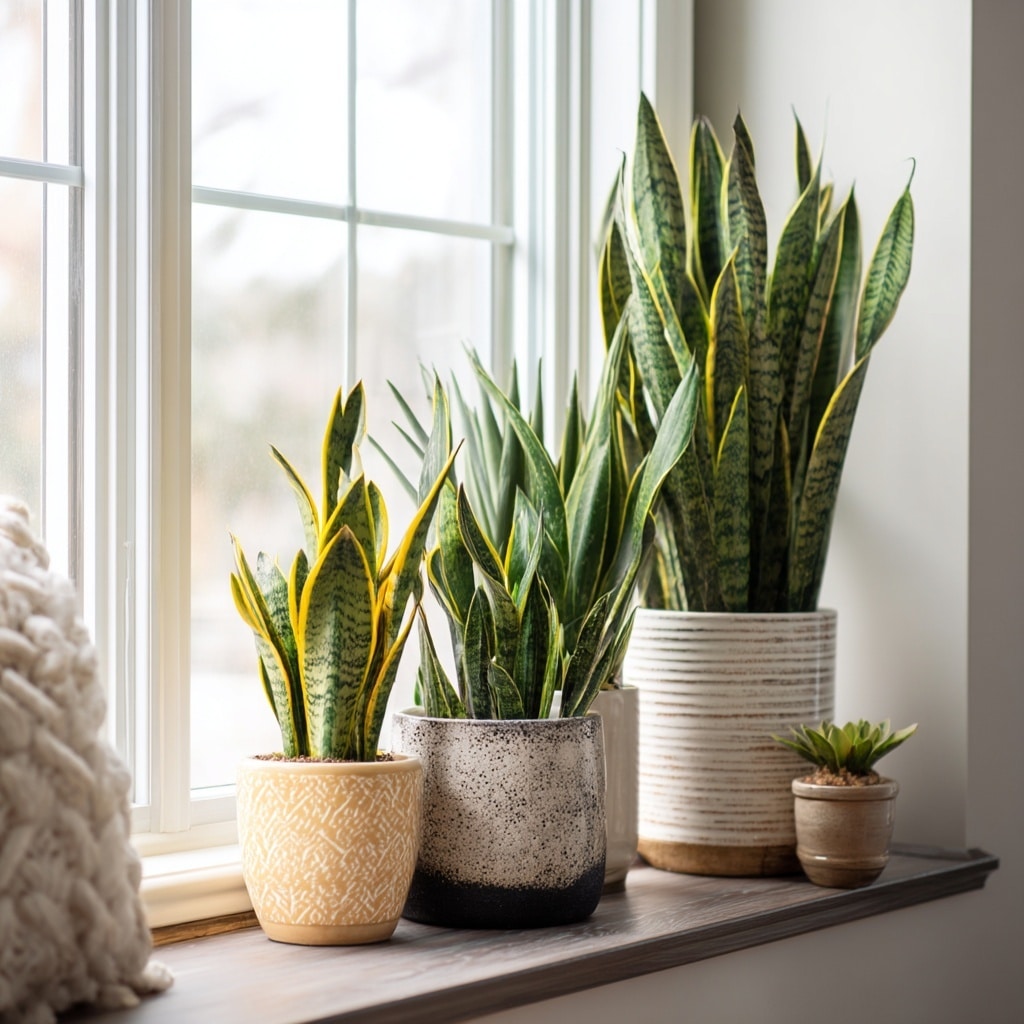Snake plant is one of the most resilient and rewarding houseplants you can grow, whether you’re a beginner or a seasoned indoor gardener. Known scientifically as Sansevieria, this striking plant with tall, sword-like leaves is not only low-maintenance but also a natural air purifier. Its architectural form complements nearly every decor style—from modern to bohemian—and it thrives with minimal care. Whether you keep your snake plant in a sunny living room or a low-light bedroom corner, it’s a reliable and stylish companion that offers more than just good looks.
Table of Contents
5 Amazing Benefits of Growing a Snake Plant
1. Purifies Indoor Air
A snake plant is one of the best natural air filters you can keep in your home. According to NASA’s Clean Air Study, it helps remove toxins like formaldehyde, benzene, and xylene from indoor environments. This makes it a perfect choice for bedrooms, offices, or anywhere clean air matters.
2. Extremely Low-Maintenance
Few plants are as forgiving as the snake plant. It tolerates irregular watering, dry air, and low light — making it ideal for people who travel often or forget to water their plants. It can even survive neglect for weeks without losing its charm.
3. Fits Any Decor Style
Whether your space is modern, rustic, minimalist, or eclectic, the bold, vertical lines of the snake plant make it a natural design element. Its sculptural leaves pair beautifully with both ceramic pots and woven baskets.
4. Propagates Easily
Want more plants for free? The snake plant is incredibly easy to propagate using either water or soil. You can multiply your favorite variety and share cuttings with friends or use them to decorate different rooms.
5. Great for Small Spaces
Because it grows upward rather than outward, the snake plant is perfect for tight spots like desktops, bathroom counters, or balcony corners. Its compact footprint and upright shape let you enjoy greenery without using much space.
Snake Plant Care Guide: Light, Water, Soil & More

Taking care of a snake plant is simple, but understanding its basic needs helps it thrive for years. Here’s what to know about keeping yours healthy.
Light Requirements
The snake plant adapts to a wide range of lighting conditions. While it can handle low light, it prefers bright, indirect sunlight. A few hours of morning or evening sun are ideal, but harsh midday rays can cause leaf burn if placed directly by a hot window.
💡 Tip: Rotate your plant every couple of weeks to ensure even growth and avoid leaning.
Watering Schedule
Overwatering is the most common way to harm a snake plant. Let the top 2–3 inches of soil dry out before watering again. In warm months, water every 2–4 weeks. In winter, it may only need water once every 6–8 weeks.
Always use a pot with drainage holes. Never let the roots sit in soggy soil, as this can quickly lead to root rot.
Ideal Temperature Range
The ideal temperature for a snake plant is between 65°F and 80°F (18°C to 27°C). It can tolerate cooler conditions down to 41°F (5°C) if the soil is dry, but it shouldn’t be exposed to frost or cold drafts.
Soil & Fertilizer
Use a well-draining potting mix, similar to what you’d use for succulents. Most standard indoor mixes will work if they don’t retain too much moisture.
Fertilizer isn’t essential, but you can use a balanced liquid fertilizer once or twice in spring and summer to boost growth.
Potting & Repotting
The snake plant prefers being slightly root-bound and only needs repotting every 3 to 5 years. Choose a pot just one size larger when repotting, and handle roots gently.
If your plant becomes top-heavy or splits its pot, it’s time for an upgrade.
Common Pests
A healthy snake plant is usually pest-free. Occasionally, stressed plants may attract mealybugs or spider mites. Wipe leaves with a damp cloth and keep growing conditions stable to prevent issues.
How to Propagate a Snake Plant (Step-by-Step)
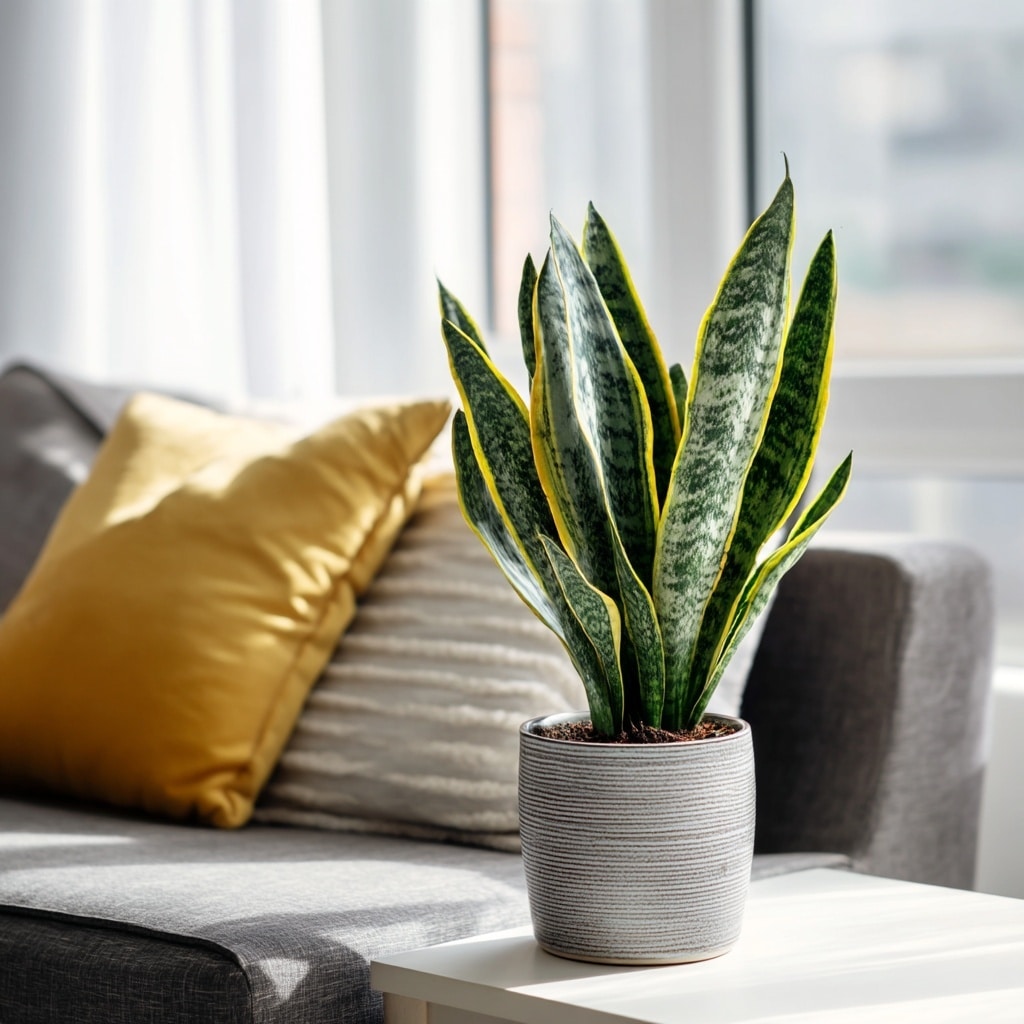
One of the best things about the snake plant is how easily it multiplies. Whether you’re reviving a struggling plant or just want more for your home, propagation is simple and satisfying.
Water Propagation
- Cut a healthy leaf near the base using clean scissors.
- Let the cut end dry for a day or two to prevent rot.
- Place it in a jar with a few inches of clean water (non-chlorinated if possible).
- Set the jar in bright, indirect light.
- Change the water weekly.
Roots usually appear in 2–4 weeks. Once they’re an inch or two long, transfer the cutting into soil.
Soil Propagation
- Cut a leaf and allow it to callous over for 1–2 days.
- Insert the cut end into moist, well-draining soil.
- Keep it in indirect light.
- Water sparingly until roots form (typically 3–5 weeks).
Soil propagation often leads to quicker transition into normal growth since there’s no transplant shock.
Bonus: Save a Dying Snake Plant
If your snake plant has rotting roots but healthy leaves, you can often save it. Cut off the damaged parts, and propagate the remaining healthy leaves using either method above. It’s a great way to give the plant a second life.
Common Snake Plant Problems & How to Fix Them
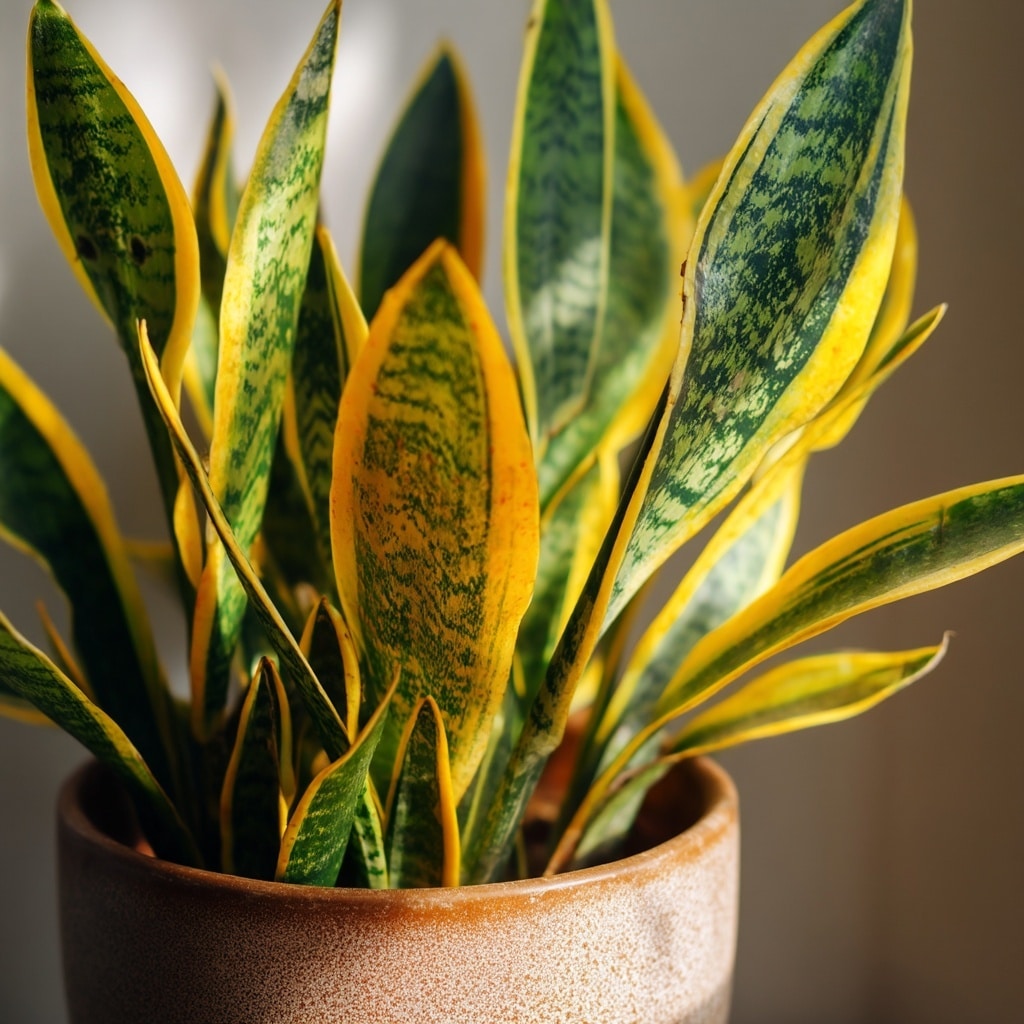
Even though the snake plant is famously low-maintenance, a few common mistakes can lead to problems. Here’s how to identify and fix them before they get serious.
Overwatering
This is the #1 cause of snake plant failure. Signs include mushy leaves, yellowing, or a foul smell from the soil. If caught early, you can:
- Remove the plant from the pot
- Trim away soft or rotten roots
- Let it dry out completely
- Repot in fresh, dry soil
Prevent future problems by only watering when the top inches of soil are fully dry.
Cold Damage
Snake plants are tropical by nature. Exposure to temperatures below 50°F (10°C), especially near drafty windows, can cause leaf curling, browning, or rot.
Solution:
- Move the plant away from cold drafts or unheated rooms
- Wait until spring before repotting or pruning damaged leaves
Low Light Stress
Although tolerant of low light, prolonged darkness weakens growth. Signs include pale or leaning leaves.
Solution:
- Move the plant closer to a window with filtered light
- Rotate occasionally to prevent leaning
🐞 Pest Infestations
Mealybugs and spider mites may appear on stressed or neglected plants. You’ll notice white fuzzy spots or webbing on leaves.
Quick fix:
- Wipe leaves with a damp cloth and a mild soap solution
- Improve airflow and reduce humidity
Popular Snake Plant Varieties You’ll Love
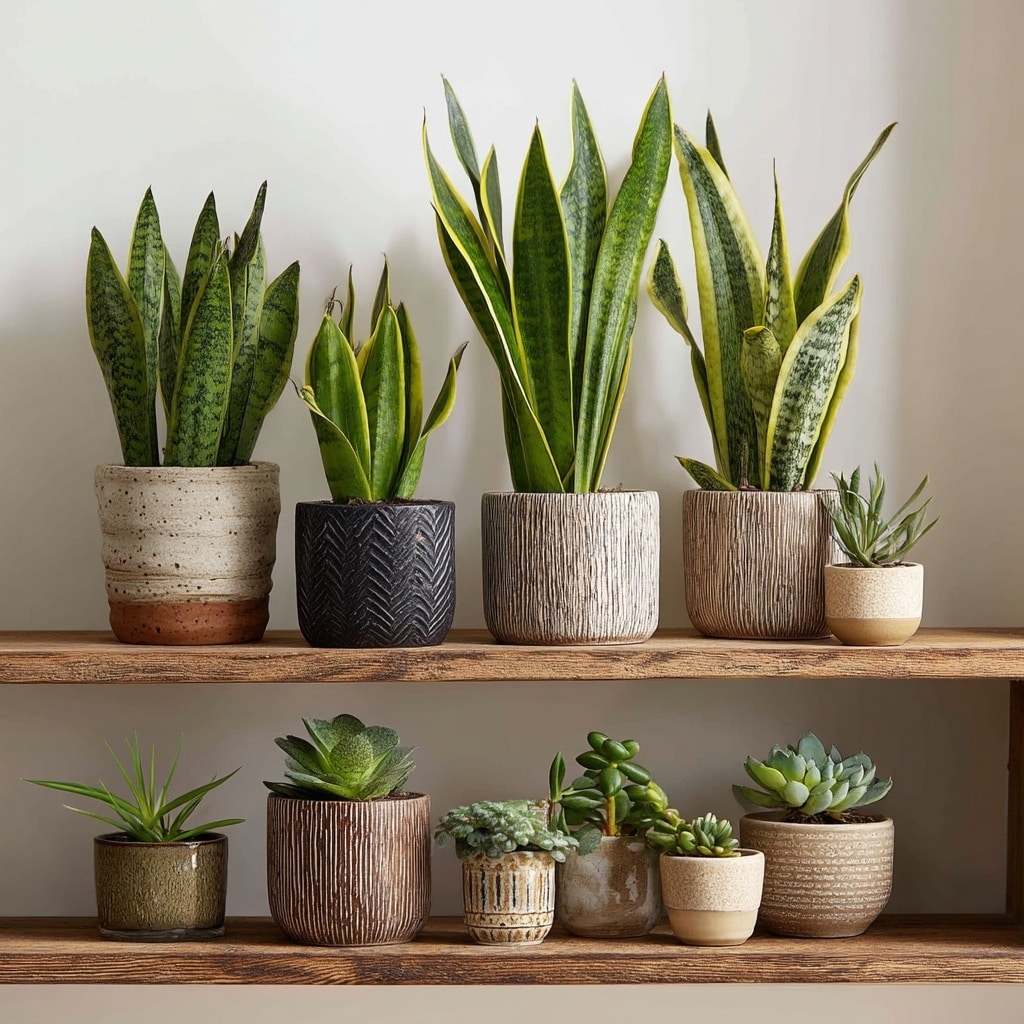
There are over 70 types of snake plant, each with its own unique leaf color, shape, and size. Whether you prefer bold stripes, silvery tones, or compact shapes, there’s a variety to suit every space.
Here are some of the most loved cultivars:
🌿 Sansevieria trifasciata ‘Laurentii’
- Features tall, green leaves with bright yellow edges
- One of the most common and striking indoor plants
- Perfect for corners or entryways
🌿 Sansevieria cylindrica
- Known for its cylindrical, spike-like leaves
- Can be braided or left to grow upright
- Great for a modern or minimalist aesthetic
🌿 Sansevieria ‘Moonshine’
- Silvery green leaves with a soft matte finish
- Grows in a tight, upward rosette
- Excellent for low-light bedrooms or desks
🌿 Sansevieria zeylanica
- Dark green foliage with wavy light green striping
- Very hardy and less prone to overwatering issues
- Often confused with ‘Laurentii,’ but lacks yellow margins
🌿 Sansevieria ‘Hahnii’ (Bird’s Nest Snake Plant)
- Compact and short, forming a rosette of stubby leaves
- Ideal for small shelves or bathrooms
- Available in several variegated forms
Each of these snake plant types brings beauty and structure to indoor gardens, with the same low-care requirements that make this plant so popular.
Is the Snake Plant Safe for Pets?
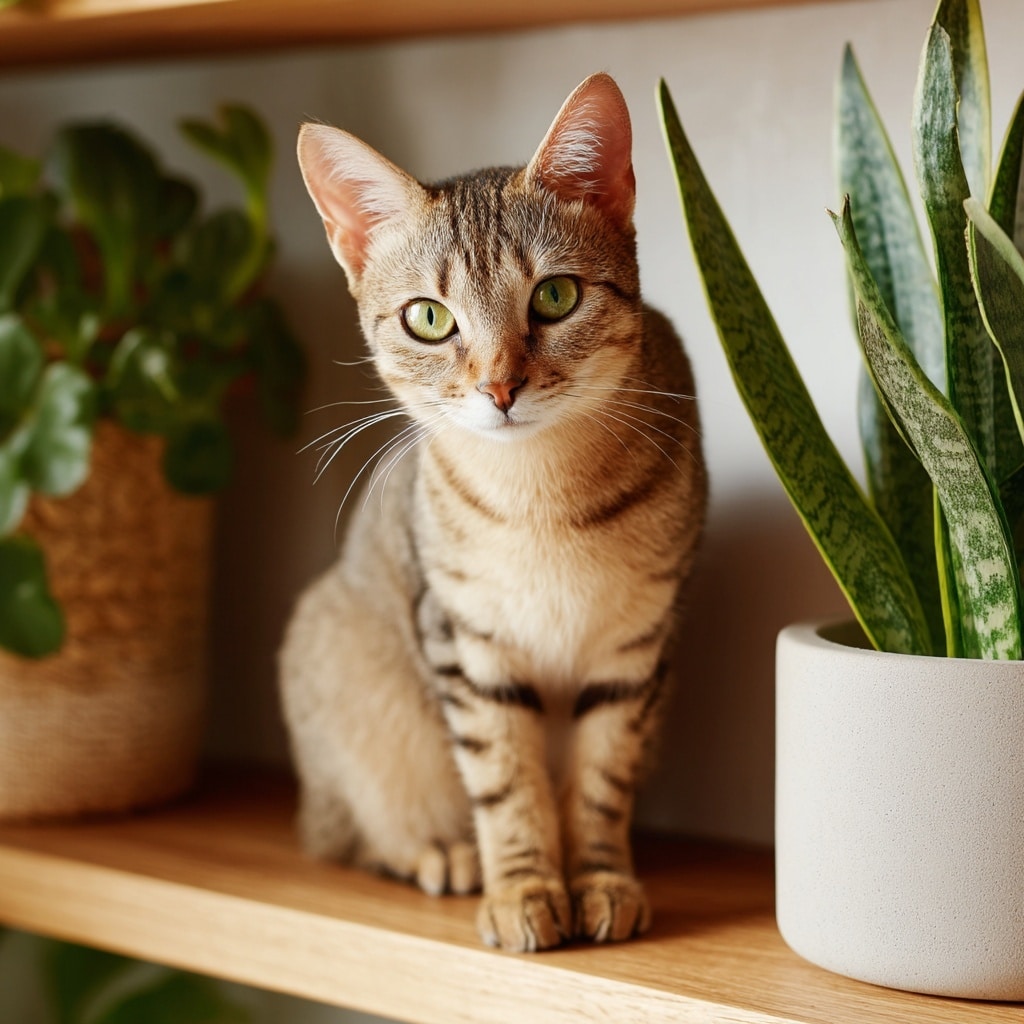
While the snake plant is a beautiful and beneficial houseplant, it’s important to know it contains saponins, which can be toxic to pets if ingested.
- 🐾 Symptoms in pets may include nausea, vomiting, or diarrhea.
- 🐶 If you have curious cats or dogs, place the plant out of reach or choose pet-safe alternatives.
Always consult your veterinarian if you suspect your pet has chewed on houseplants
Final Thoughts
The snake plant is more than just a stylish plant — it’s a reliable companion that purifies your air, thrives on neglect, and fits in any home. Whether you’re a beginner or a houseplant enthusiast, this low-maintenance beauty makes indoor gardening easier and more rewarding.
With its wide range of stunning varieties, easy propagation methods, and resilience, the snake plant deserves a place in every indoor garden.


